Lichfield - Part 01 - The Cathedral
w/e 06 October 2019
All of this week's pictures were
taken with a Kodak DX6490
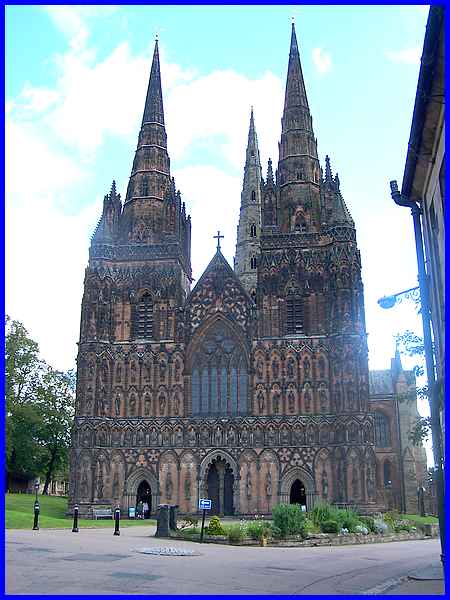
We had a few hours in Lichfield recently and obviously our first
port of call was the cathedral, the only mediaeval cathedral
in England to have three spires. Although there was blue in the
sky there was a hint of drizzle in the air hence the spots on
the camera lens in this picture.
|
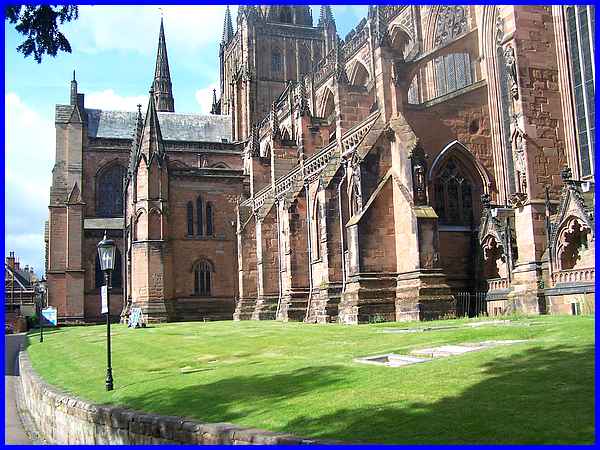
We had actually approached the cathedral from near to the southeast
corner and walked along the road by the southern elevation, marvelling
at the enormous size of the building and thinking of how it was
built many centuries ago without the aid of modern technology
and equipment. Royalist troops barricaded themselves inside the
cathedral to withstand a siege during the Civil War and the building
was damaged by cannon fire which destroyed the central tower.
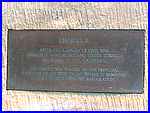  Restoration continued
through the 17th, 18th and 19th centuries and was completed in
1901. In an alcove on this side of the cathedral is a statue
of Charles II and a plaque in the stone plinth reads as follows: Restoration continued
through the 17th, 18th and 19th centuries and was completed in
1901. In an alcove on this side of the cathedral is a statue
of Charles II and a plaque in the stone plinth reads as follows:
"After the ravages of the Civil War, Charles II gave money
and timber towards the repair of this cathedral. His statue was
placed in the principal position on the west front where it remained
until the 19th century restoration."
|
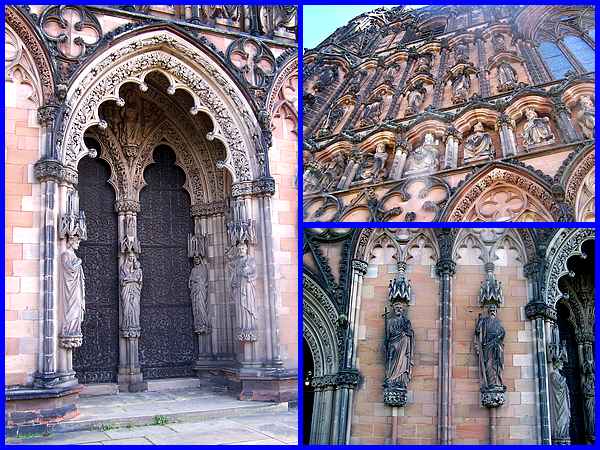
It is the west front of the cathedral though that is really impressive
which is decorated with over one hundred ancient statues as well
as other carvings in the stonework around the doors.
|
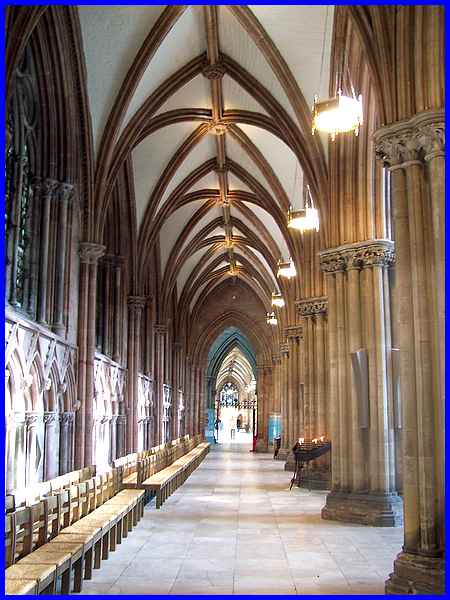
We were greeted on entering the cathedral and presented with
a leaflet containing a plan pointing out specific features within
its walls. It is just as impressive inside as out and this is
the view along the north aisle of the Nave.
|
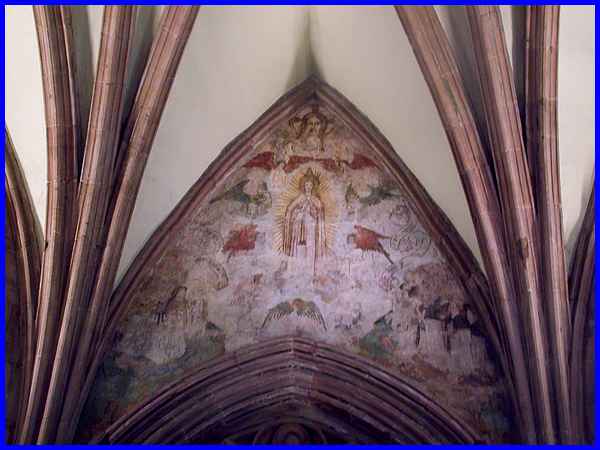
Following the plan we passed St Stephen's Chapel and entered
the Chapter House to view one of three mediaeval wall paintings
left after the Reformation and the Civil War.
|
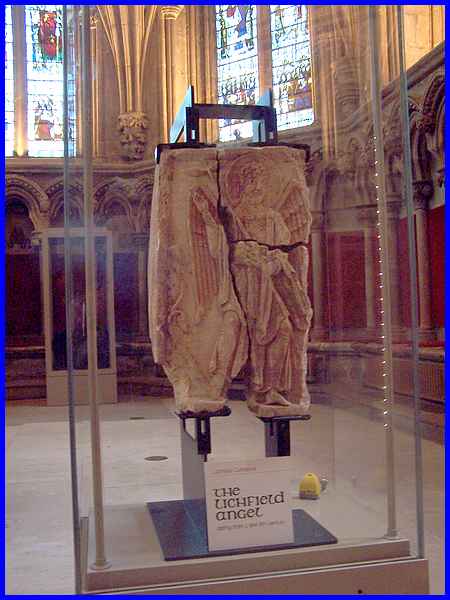
Also in the Chapter House is the Lichfield Angel, an 8th century
sculpture found during excavations in the Nave.
|
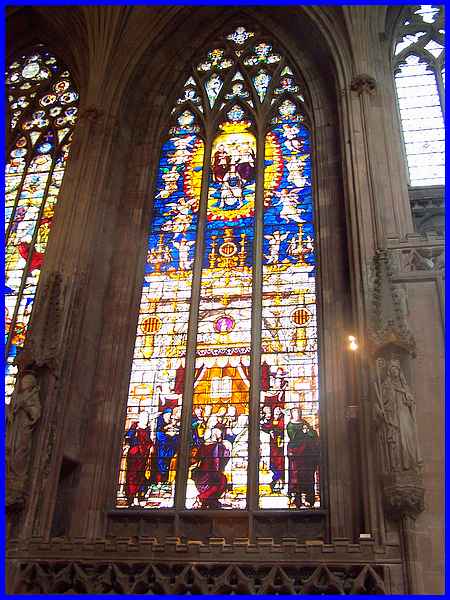
In the Lady Chapel at the far end of the cathedral are a number
of stained glass windows known collectively as Herkenrode Glass.
These are 16th century windows from the Abbey of Herkenrode and
are considered to be among the best examples of Flemish glass
in Europe.
|
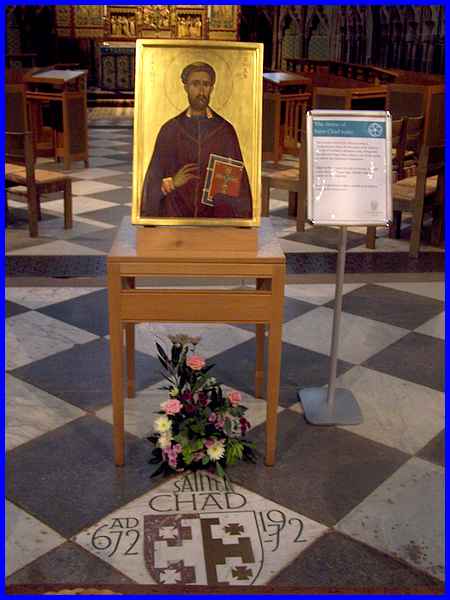
In front of the Lady Chapel is the Shrine of St Chad. The notice
on the right says that the modern icon of St Chad provides a
contemporary focus for the place of St Chad in the life of the
cathedral today. St Chad along with the Blessed Virgin Mary is
one of the saints to whom the cathedral is dedicated.
|
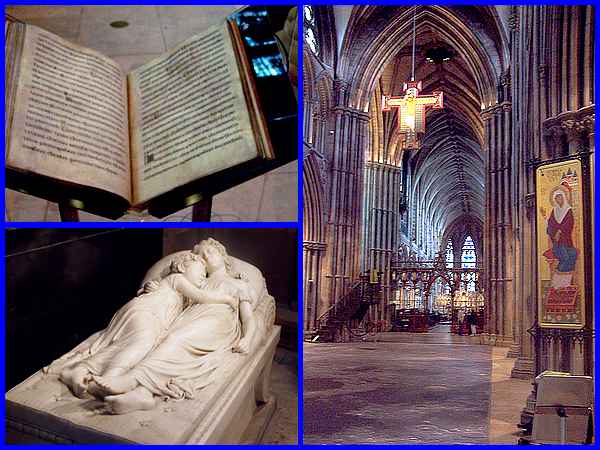
There are many treasures and important historical things to be
seen in the cathedral. Here are just three. Top left - the St
Chad Gospels, one of the most ancient books in the British Isles
dating from the 8th century. Bottom left - the Sleeping Children,
a memorial sculpture of Ellen Jane (died 1815) and Marianne (died
1813) by Sir Francis Chantrey who was commisioned by the widow
of their father Prebendary William Robinson, Rector of Stoke
upon Trent and Swynnerton and who had died in 1812. Mrs Robinson
had lost her entire family within the space of three years and
the sculpture came to the cathedral in 1817 where her father
was Dean. Right above - a view from the Nave of the Screen by
Francis Skidmore showing the angels who visited St Chad.
|
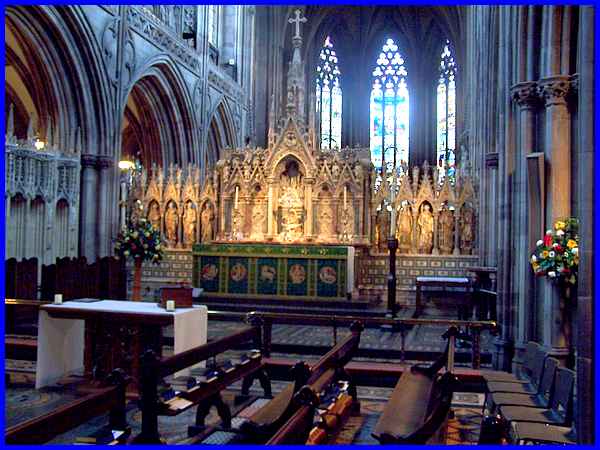
Through the Screen in the previous picture the High Altar can
be seen and this closer view shows the triptych altarpiece with
its high relief scenes from Oberammergau. The original altar
was removed in the late 18th century and was replaced about a
hundred years later in 1895 during the extensive restoration
by Sir George Gilbert Scott.
After spending some time looking around the cathedral we moved
on to discover more of the city.
Forward to Part 02
|




 Restoration continued
through the 17th, 18th and 19th centuries and was completed in
1901. In an alcove on this side of the cathedral is a statue
of Charles II and a plaque in the stone plinth reads as follows:
Restoration continued
through the 17th, 18th and 19th centuries and was completed in
1901. In an alcove on this side of the cathedral is a statue
of Charles II and a plaque in the stone plinth reads as follows:






